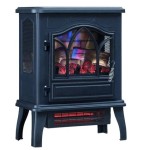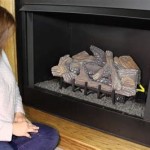Non-Venting Gas Fireplaces: A Guide to Understanding Their Features and Benefits
Gas fireplaces are a popular choice for homeowners seeking to enhance their living spaces with warmth, ambiance, and visual appeal. Among the various types of gas fireplaces available, non-venting gas fireplaces stand out as a convenient and efficient option. These fireplaces do not require a dedicated vent to the outdoors, making them ideal for installations where traditional vented fireplaces are not feasible or desirable. This article delves into the characteristics, advantages, and considerations associated with non-venting gas fireplaces, providing insights for those considering these appliances.
Understanding Non-Venting Gas Fireplaces
Non-venting gas fireplaces, also known as vent-free or ventless fireplaces, operate by burning natural gas or propane within a sealed combustion chamber. Unlike traditional vented fireplaces that exhaust flue gases through a chimney, non-venting fireplaces release combustion byproducts back into the room, relying on a sophisticated system to ensure safe and efficient operation. Key components of a non-venting gas fireplace include:
-
Combustion Chamber:
This sealed chamber houses the burner and facilitates complete combustion of the fuel. -
Oxygen Sensor:
A sensor monitors oxygen levels within the room to regulate the combustion process, ensuring adequate oxygen supply for safe operation. -
Safety Features:
These include a tip-over switch, a flame-sensing device, and a carbon monoxide (CO) detector, which shut down the fireplace in case of malfunction or elevated CO levels. -
Air Intake and Exhaust System:
An air intake system draws fresh air from the room, while a sophisticated exhaust system vents combustion byproducts back into the room after undergoing a filtering process.
Advantages of Non-Venting Gas Fireplaces
Non-venting gas fireplaces offer several advantages over traditional vented fireplaces:
-
Installation Flexibility:
Non-venting fireplaces can be installed in various locations without the need for chimney construction or external venting. This makes them suitable for areas with limited space, existing drywall, or architectural constraints. -
Cost-Efficiency:
Installing a non-venting gas fireplace can be more affordable than a vented fireplace, as it eliminates the expense of chimney building or extensive modifications. Additionally, these fireplaces often boast higher energy efficiency compared to traditional vented fireplaces. -
Ease of Use:
Non-venting fireplaces are generally simple to operate, requiring minimal maintenance. They are also typically equipped with electronic ignition systems for convenient lighting. -
Versatility:
These fireplaces come in various sizes, styles, and designs, offering a wide range of options for different room aesthetics. -
Heat Output Control:
Most models allow for variable heat output, allowing users to adjust the temperature to their preferences.
Considerations for Non-Venting Gas Fireplaces
While non-venting gas fireplaces offer numerous benefits, it's essential to consider certain factors before opting for this type of fireplace:
-
Room Size and Ventilation:
Non-venting fireplaces are suitable for smaller rooms with adequate ventilation, but they can be unsuitable for spaces with limited air exchange. Adequate ventilation ensures safe operation and prevents the accumulation of combustion byproducts. -
Safety Measures:
It's crucial to follow all manufacturer instructions and safety guidelines when installing and operating a non-venting gas fireplace. Regular inspection and maintenance are essential to ensure proper functioning and safety. -
Carbon Monoxide (CO) Detection:
While non-venting fireplaces have built-in CO detectors, it is advisable to supplement these with additional CO detectors in the room, ensuring a layered safety approach. -
Local Building Codes:
It is essential to comply with local building codes and regulations regarding the installation of non-venting gas fireplaces. Consulting with a qualified professional is crucial to ensure a safe and compliant installation.
In summary, non-venting gas fireplaces provide efficient and convenient heating options, offering a range of advantages over traditional vented fireplaces. Their ease of installation, versatility, and cost-effectiveness make them suitable for various homes. However, it is essential to carefully consider room size, ventilation, safety measures, and local building codes before making a decision. Consulting with a professional can help ensure a safe and compliant installation, maximizing the benefits of this type of fireplace.
:max_bytes(150000):strip_icc()/ventless-gas-fireplaces-4160746-hero-f9d4bdcd9bd446eb84406de306f790ba.jpg?strip=all)
How To Pick Out A Ventless Gas Fireplace

What Is A Ventless Gas Fireplace Experts In Gaithersbutg Md

Duluth Forge Dual Fuel Ventless Gas Fireplace 32 000 Btu T Stat Control Antique White Finish 170123 The Home Depot

White Mountain Hearth Vfpa32bp Vail Ventless Premium Fireplace With Slope Glaze Burner And Log Set 32

White Mountain Hearth By Empire Ventless Outdoor Traditional Premium Gas Fireplace 36

Ventless Gas Fireplace Propane

Ventless Gas Fireplace Vent Free Modern

Vent Free Inserts White Mountain Hearth

Vent Free Gas Fireplaces Inserts Stoves Napolis Godby Hearth And Home

Pleasant Hearth 18 Dual Fuel Wildwood Vent Free Gas Log Set 30 000 Bt
Related Posts








